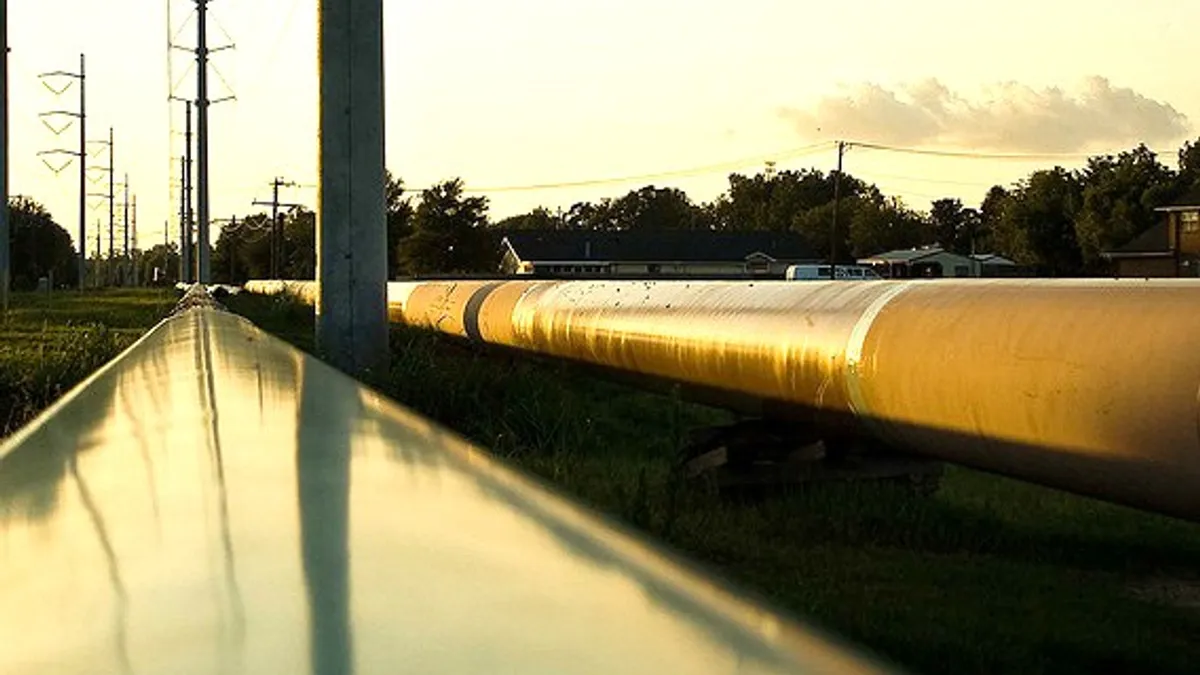Dive Brief:
- Officials from PJM Interconnection and ISO New England say opposition to new gas pipeline capacity is putting their availability to procure fuel at risk, especially in the colder months when heating demand spikes. But looking ahead to the winter, both grid operators say they will meet demand, SNL reports.
- PJM gave a winter forecast last week at the Federal Energy Regulatory Commission, predicting peak load of more than 135,000 MW, though it has almost 184,000 MW of capacity installed.
- New England officials said the biggest threat to the grid would be an extended cold snap, citing a possible dearth of natural gas capacity to meet unexpected demand.
Dive Insight:
Local opposition to natural gas pipelines has steadily increased, seen in the protests over Duke Energy's proposed Atlantic Coast Pipeline Project. In Massachusetts' case, the opposition made its way up to the the court, which prohibited utilities from charging customers to recoup costs for pipeline construction. And Connecticut's environmental agency just canceled its request for proposals for new gas projects in a bid to boost carbon-free energy resources.
Now some power sector officials say such opposition will hurt reliability in a region already struggling to build enough pipeline capacity to meet demand. PJM and New England expect to meet demand this winter, but their forecasts to federal regulators each focused on the need for new pipeline capacity—as well as the difficulty in getting it built.
New England ISO Vice President of Operations Peter Brandien told FERC in testimony that In the event of a cold snap the grid has adequate generating capacity, "but our ability to meet electric energy needs is at risk if the natural gas infrastructure serving the region is unable to supply fuel to gas-fired generators."
PJM said the "vast majority" of pipelines in its territory are prepared for winter, with the exception of the Texas Eastern line. The TE Penn Jersey line, running from Pittsburgh to New Jersey, ruptured in April and is currently running at about 50% of capacity. A return to full service is expected in November.














